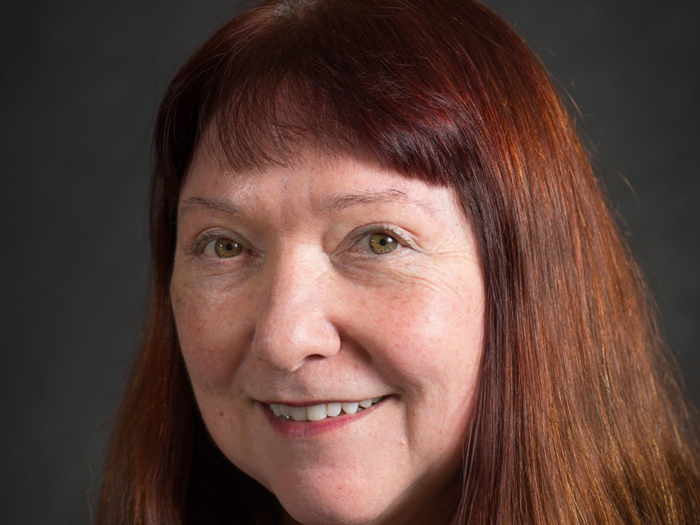Risk Scenarios Live!
The Defeat of Lupe
Disclaimer: The events depicted in this scenario are fictitious. Any similarity to any corporation or person, living or dead, is merely coincidental.
The Injury
The scenario begins with the brief video below:
The Aftermath
At 58 years old, Lupe feels she has little to complain about. She’s able to earn a meaningful income for her family and provide for the two grandchildren she’s been left to raise. The workdays are long, though, and at five foot three and 145 pounds, Lupe could probably be a little more fit.
But there is work to do and a family to feed. Lupe has little time for vanities.
When Lupe slips in the bathroom and injures her back, two things run through her mind immediately. This is the worst pain she has ever felt outside of childbirth, and she must tell no one about it. Lupe has seen coworkers who were injured and lost their jobs. Not to mention the fact that as a first generation immigrant, Lupe has unfounded fears about discrimination and the threat of deportation, even though she is here legally.

Before she leaves work that night, Lupe downs a couple of Ibuprofen. The tablets help a little, which gives her hope that she can ride this out.
But the pain wakes her the next morning before the rising sun does. The pain is deep, persistent, and throbbing.
Standing helps, so Lupe takes another couple tablets of Ibuprofen, thinking she can ward off the pain. But walking to catch the bus to work is a real challenge. The pain dogs Lupe but she soldiers on.
Within a week the pain is too much. Pushing aside her cultural fears, Lupe visits a walk-in clinic.
 “I want to work,” Lupe tells the doctor at the clinic.
“I want to work,” Lupe tells the doctor at the clinic.
“Go ahead and do so,” she says. “But please take it easy, don’t push yourself.”
“I won’t … too hard,” she says with a game smile.
The physician at the clinic prescribes Vicodin, Ibuprofen and Soma for Lupe.
Lupe tries to manage her pain with the medications and restraining her activities at work. Her co-workers try to help shield her from managerial scrutiny. But it wouldn’t take much to see that she is in serious pain.
Three weeks after her injury, Lupe is not only having extreme back pain but is also having a burning sensation in her groin and right upper leg. Scared by the expanding area of pain she is experiencing, Lupe reports her injury to her workplace and her HR specialist refers her to the hotel’s occupational medicine specialist.
The occupational medicine specialist takes X-rays of Lupe’s back and increases her opioid dose from Vicodin to Norco and moves her off of Ibuprofen and onto Celebrex. His diagnosis is that Lupe has an acute back sprain.
The claims handler, on the occupational medicine specialist’s recommendation, also authorizes six weeks of physical therapy for Lupe.
The Treatment
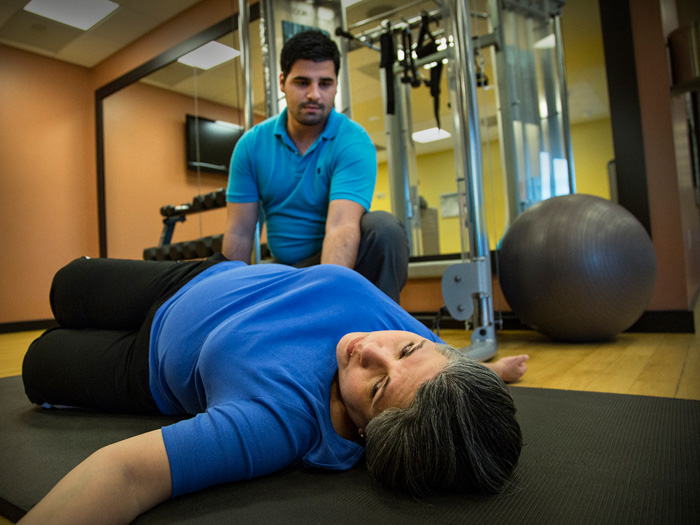
Lupe experiences a two-week delay in getting her physical therapy authorized.
But once she gets there, one visit to physical therapy is enough for Lupe. She doesn’t understand the therapist’s instructions due to a language barrier and isn’t relaxed enough to be manipulated in any way.
“You have to relax Lupe, I’m not going to hurt you,” the therapist says.
 “Owww!” she says when the therapist attempts to work on her back.
“Owww!” she says when the therapist attempts to work on her back.
All Lupe knows is that she has been hurt when she was told she wouldn’t be. In pain, fearful, and now angry, Lupe pushes herself upright, grabs her shoes and walks out of the room, limping as she goes.
“I don’t want anybody touching me,” she says to herself on the bus ride home.
Lupe’s pain persists to the point that nine weeks after her injury, her occupational medicine specialist orders an MRI for her. His diagnosis after seeing the results is that she has persistent low back pain. The MRI reveals bulging discs, common in someone Lupe’s age, which could possibly be related to her back pain.
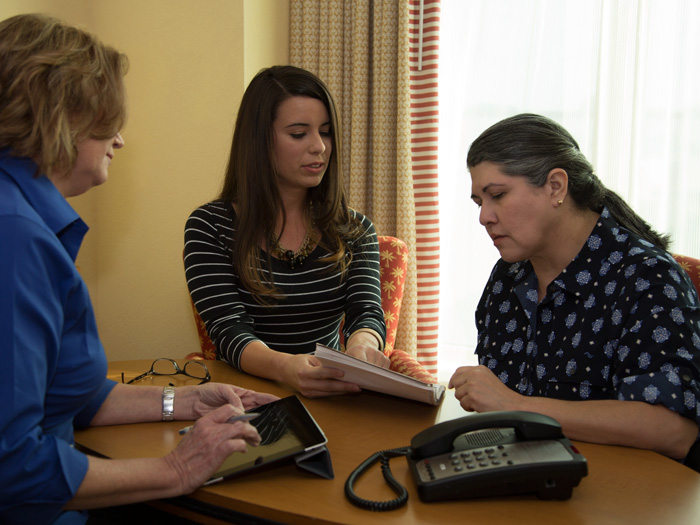 Given the lack of improvement in Lupe’s recovery and what he’s seen on the MRI, the occupational medicine specialist also writes a light duty work restriction for her.
Given the lack of improvement in Lupe’s recovery and what he’s seen on the MRI, the occupational medicine specialist also writes a light duty work restriction for her.
The occupational medicine specialist also seeks authorization from the claims handler for Lupe to visit a spine surgery specialist.
“Another doctor? Why?” Lupe says after the claims handler authorizes that referral. Lupe’s anxiety over her course of treatment is beginning to ratchet up.
The conversation with her manager after her company sees the work restriction note does not — from Lupe’s perspective — go well.
“We don’t see light duty as an option,” the manager says to Lupe with the assistance of a bilingual case manager from the TPA who works onsite. “We want you to go off work until you get better,” she says.
“Just until you get better, Lupe,” the case handler says encouragingly, seeing the fear in Lupe’s eyes.
 Lupe, her back killing her, gets on the bus for the ride home that late afternoon, fearing for her livelihood. She can’t keep back tears on the bus, thankful that no one else is sitting next to her on the bus to see her tear-streaked face.
Lupe, her back killing her, gets on the bus for the ride home that late afternoon, fearing for her livelihood. She can’t keep back tears on the bus, thankful that no one else is sitting next to her on the bus to see her tear-streaked face.
Fourteen weeks after her injury, Lupe is in increasing pain and anxiety. The burning sensation in her groin and upper leg has extended to her knee and she’s getting tingling and numbness in her right toes.
The spine specialist reviews the MRI results and determines that one of the bulging discs in Lupe’s back is impinging on her sciatic nerve.
“We’re going to need to operate,” the spine specialist tells Lupe. In what is now a vain effort to manage her pain, her meds are upgraded to Lyrica, Oxycontin, IR and Flexeril.
Lupe is now convinced that not only her livelihood, but her very life is now in danger. But through an interpreter, she is mollified to the point where she submits to the surgery.
The Tragedy
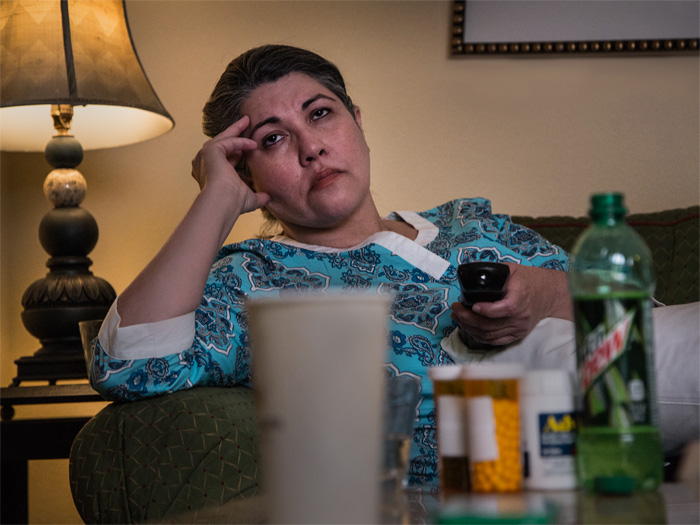
Lupe undergos a discectomy, but 26 weeks after her injury, Lupe’s pain, anxiety and anger have only increased. The once dutiful, hard-working woman is a shadow of herself. Her use of painkillers has dulled her mind, to the point where most of her day is consumed watching television and eating take out.
Lupe’s inability to stick to a physical therapy regimen means that the operation offers her little relief or progress. Because of her ongoing pain, her spine specialist recommends spinal fusion, to be scheduled within two weeks. He also adds Ambien CR for sleep, Zofran to combat nausea and Provogil and Effexor to help her fatigue.
Where once Lupe had the energy to at least question the necessity for a medical procedure, now she has none. Lupe has also begun to put on weight. Where she weighed 142 pounds at the time of her injury, she now weighs 157 pounds.
More than six months after her injury, Lupe undergoes a spinal fusion operation with the idea that bracing her back in this manner can help her. Lupe is too weak to protest a visit to physical therapy, so she submits to four weeks of physical therapy after the spinal fusion procedure.
A coworker who lives in Lupe’s building comes to visit her one day. The normally clear-eyed Lupe’s face is puffy and her eyes are red.
“Lupe, what can I do for you?” her friend says.
“There is nothing you can do for me,” Lupe says. “The doctors don’t even know what they can do for me.”
 Lupe’s friend looks down to the array of prescription medication bottles that Lupe keeps on the coffee table in front of her television set, next to cans of Mountain Dew and packages of Fig Newtons.
Lupe’s friend looks down to the array of prescription medication bottles that Lupe keeps on the coffee table in front of her television set, next to cans of Mountain Dew and packages of Fig Newtons.
“Those medicines, I don’t even know the names of them,” Lupe’s friend says.
Lupe holds up a tattered spiral notebook, stained with coffee and pizza sauce.
“This is the only way I can keep track,” Lupe says. “I track them by color and shape. I take 20 pills a day, Magdalena, 20 pills a day.”
After four weeks of physical therapy post operation, Lupe is in as much pain as she ever was.
Her claims handler authorizes a return to see the spine specialist.
“Lupe, there’s really not much more I can do for you,” the spine specialist says.
Lupe returns to her occupational medicine specialist, who like the spine specialist, is at a loss as to what to do for Lupe. He increases the Oxycontin in an attempt to improve her pain management.
One look at her and the occupational medicine specialist knows that something else must also be done to relieve her pain. Her face is contorted with it.
Following the occupational medicine specialist’s recommendation, the claims handler authorizes Lupe’s visit to a pain specialist. The pain specialist reviews Lupe’s surgery and medication history and recommends surgery to implant a pain pump in Lupe, which the claims handler authorizes.
One day, Lupe’s claims handler comes to visit her, accompanied by a home health care aid who is there on her bi-weekly visit.
Like Lupe’s friend, the claims manager surveys the array of prescription bottles on Lupe’s coffee table.
“Lupe, we’ve got to do something to improve your quality of life,” the claims manager says.
“Improve my quality of life? This injury has ruined my quality of life,” Lupe says.
“I was better off taking aspirin and working than with this,” Lupe says angrily, waving her hand at the eight medication bottles on her coffee table.
“We want to get rid of these bottles,” the home health care aid says. “We want to give you a pain pump to help you manage your pain.”
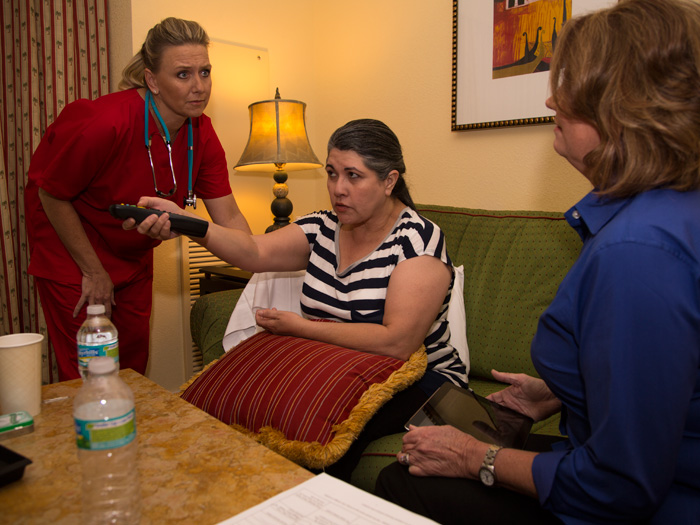 “A pain pump? What is that like a bicycle pump?” Lupe says.
“A pain pump? What is that like a bicycle pump?” Lupe says.
“No,” the case manager says. “It’s surgically implanted.”
“Surgery! More surgery!” Lupe exclaims.
Lupe picks up a television channel changer, and tries to ignore her claims manager and health care aid by turning on the television to a Spanish speaking program.
Lupe Valenzuela will eventually be declared permanently disabled and will never work again.
The Session
This scenario was originally presented at the 2013 National Workers’ Compensation and Disability Conference in Las Vegas.
As part of the discussion, panelists discussed key aspects presented in the scenario.
Panelists included Dan Reynolds, R&I editor-in-chief; Dr. Robert Goldberg, chief medical officer, Healthesystems; and Tracey Davanport, director, National Managed Care, Argonaut Insurance.
Insights from their discussion are highlighted below:





